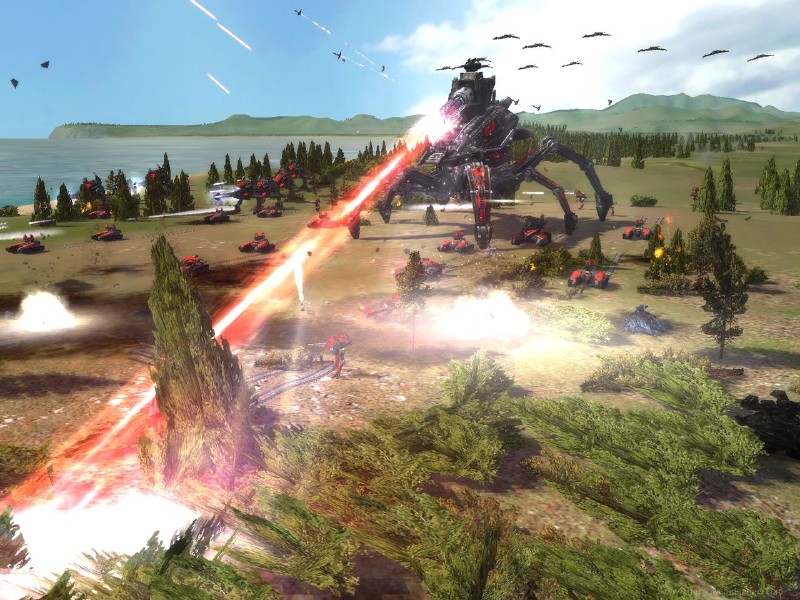
August 19, 2009 - Giant explosions and the culmination of a set of decisions made to best manage a complex tug-of-war resource system is part of what made Gas Powered Games' Supreme Commander so great. Hopefully the same sort of thing could be said about the sequel, which I had a chance to play at the Square-Enix booth at Gamescom 2009. While in many ways the game felt familiar, there were also quite a few areas of the tech trees that proved to be quite different.
Many things from the original are still there. You still control a gigantic robot to build your initial base. You can still queue up build orders when setting down mass extractors, generators, and land factories to fuel production of and build units. It's still possible to zoom way out until you can see the entire map, though in this case the map was rather small, resembling more of a Demigod map than something out of the original game. When you're zoomed out, units are still labeled with little symbols that help distinguish what is what, an important factor when a whole bunch of units are bunched together.

The game also makes use of a new stretch cursor on the 360 that automatically links your cursor with the nearest unit or building. This makes controlling the units much easier but doesn't force the player to deal with snappy camera problems. The same is true of the build menus, which automatically snap to whatever factory you're closest to. Best of all, you can issue production orders at the factories without unselecting the units you're controlling. That alone is worth the price of admission.
Another noticeable difference was the way in which units are upgraded. Instead of building a whole bunch of little structures to support and defend your base, you can actually build shields and guns directly on your factories, in addition to being able to set up the regular point and air defenses. For upgrading to new units, you'll also have access to a Company of Heroes-style upgrade grid, where points you earn through battle can be put toward advancing the effectiveness of your economy or military.
A few of the options I saw in the build allowed you to cut the cost of production at your factories, boost a veterancy rate of your units, or even unlock new units. The overall branching research tree is divided into a number of tabs, including ones for your land, air, and sea factories, as well as structures and your commander. This system wasn't really fully functional while we were playing though, as this is still an early build of the game it seems and descriptor text was missing from most of the tree.
Chris Taylor said the new system was an attempt to make the first and second tier techs and early units more meaningful towards the end of the game. Rather than simply racing for this highest units in the tech tree and using those, the incremental boosts to your lower level units will give them a chance to stay competitive on the battlefield.
The mission itself was a seemingly simple defend mission, with the occasional character portrait popping up to speak. The game still felt a little rough, but expect that sort of thing to change as the product is polished in the time leading up to its release date.
16.12





Bookmarked this. Thanksgiving owing to you after sharing. Unequivocally benefit my time.
This is a celebrated article as they all are. I have been wondering nearly this looking for some time now. Its gigantic to note down this info. You are objective and balanced.